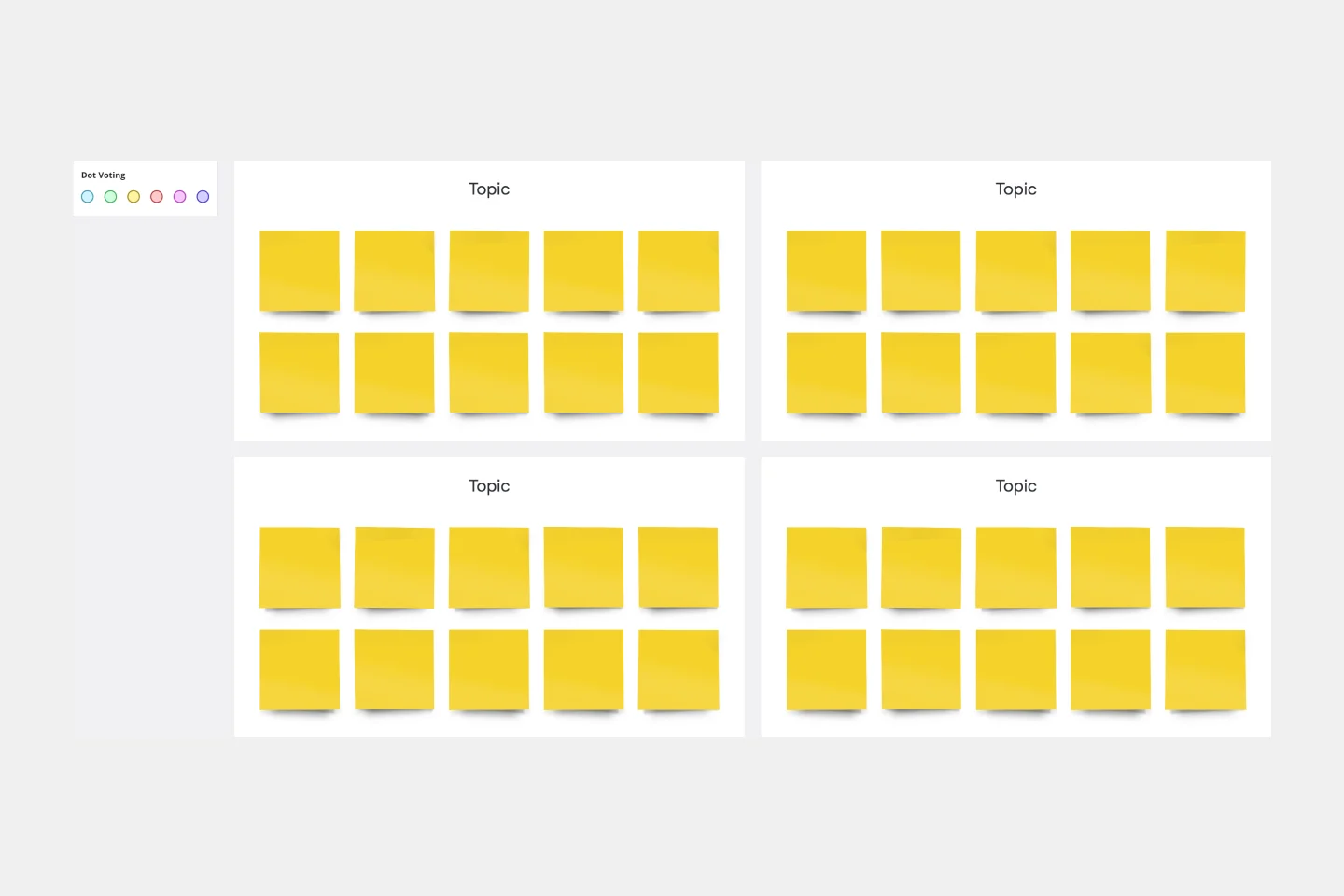About the Mandala Chart Template
The mandala chart template helps elevate your brainstorming, planning, and goal-setting. It offers a unique lens to view, understand, and organize your ideas, bridging abstract concepts and concrete action plans.
The template consists of a chart that divides a large theme or concept into eight sub-themes, allowing for a comprehensive understanding of topics at different levels of granularity. The chart visually encompasses the complex relationships between the core theme and sub-themes, promoting clarity and coherence.
How to use the mandala chart template
Using the mandala chart template is easy. Follow these steps to begin filling it in:
Write the goal or theme you want to explore at the center of the template.
Fill in the eight sticky notes around the main idea or objective, writing down what is needed to achieve this goal.
Divide the eight elements from the previous step into actionable plans. Write them down in stickies.
Share your mandala chart with others. Ask for instant feedback directly on your board.
Monitor and follow-up. As soon as you start making progress, update the mandala chart.
Why use a mandala chart template?
Filling in a mandala chart offers a holistic view of a topic or problem, making it possible to see the big picture without losing sight of the details. Some of the benefits of using a mandala chart template include:
Efficiency and speed: By using a pre-made template, you can craft mandala charts in a fraction of the time it would usually take.
Organized visualization: Systematically visualize and organize ideas, ensuring no crucial point is left out. You can also add images, links, or other artifacts to your board to supplement the mandala chart.
Holistic understanding: By dividing a central theme into sub-themes, you can better grasp the bigger picture and the interconnectedness of ideas.
Actionable planning: Beyond mere visualization, the mandala chart template guides planning actions that will lead to success.
Collaboration and sharing: The design is primed for sharing, ensuring you can easily exchange ideas with colleagues or stakeholders.
Mandala chart template FAQs
What's the primary purpose of a mandala chart?
Mandala charts are tools to understand and visualize the relationships between a central theme and its sub-themes, helping users see the detailed components and the broader overview of a topic.
Can I customize the mandala chart template to fit my needs?
Yes! The template is designed for flexibility, ensuring you can adjust it to reflect your unique needs.
Is the mandala chart only for brainstorming?
While it's an excellent tool for brainstorming, its uses extend to planning, organizing, and even presenting ideas. It's a versatile tool fitting multiple phases of a project.
How does the mandala chart aid in collaboration?
The design of the mandala chart encourages sharing and collaboration. By clearly representing ideas, all collaborators are on the same page, streamlining discussions and collective decision-making.








